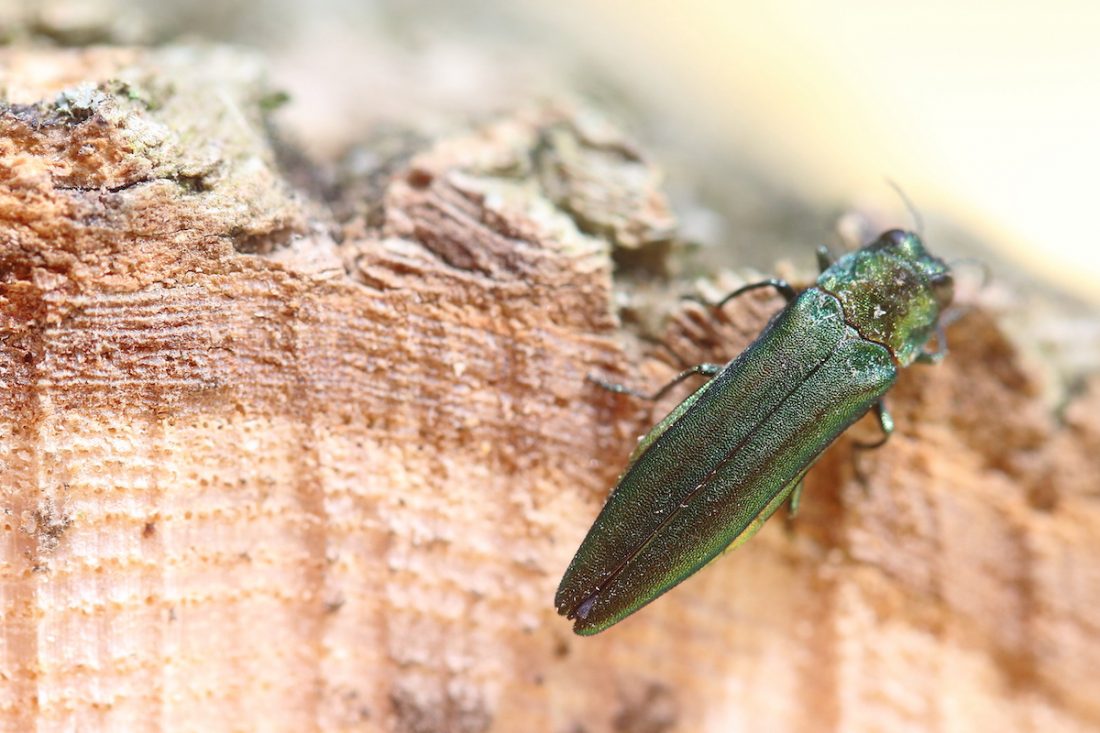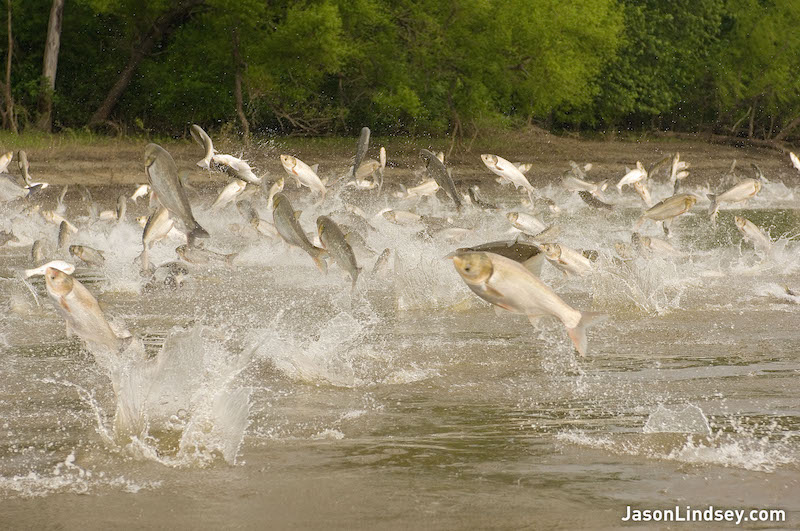
Emerald ash borer (Agrilus planipennis). Photo by Chris Evans.



Emerald ash borer (Agrilus planipennis). Photo by Chris Evans.
Invasive species problems can be complex and involve many different stakeholders. Fortunately, lots of great work is under way in Illinois to combat invasive species. The Illinois Department of Natural Resources is working to control invasive plants on state lands. The Natural Resources Conservation Service has programs to assist private landowners with controlling invasive species. The University of Illinois is providing invasive species related education and publications. The Illinois Department of Agriculture and the Illinois Natural History Survey monitor and survey for new invasive species emerging on the landscape. Some county and municipal agencies work to manage invasive species on their lands. Partnerships and private groups work together and with landowners on local invasive species issues.
Even with the extensive amount of work happening, some approaches to managing invasive species are best tackled in cooperation and at a large scale. To address this need, a statewide invasive species group was established in 2005 as the Illinois Invasive Plant Species Council, which focused solely on terrestrial invasive plants. The original council was productive, including helping to establish the statewide Illinois Invasive Species Awareness Month and providing assessments and recommendations that led to invasive plant species being regulated. Unfortunately, the Council went inactive in 2015.

While it is important to deal with terrestrial invasive plants, Illinois has invaders that fit other categories as well. In fact, invasive species come in all shapes and sizes and impact all different habitat types. Some of the better-known invasive species in Illinois include the emerald ash borer (Agrilus planipennis), which has already killed millions of ash trees in Illinois, silver carp (Hypophthalmichthys molitrix) that leap into the air when startled and have been known to injure boaters, and jumping worms (Amynthas and Metaphire complex) which are impacting soil ecosystems across that state.
When interest in restarting an Illinois-wide invasive species effort began, interested parties recognized that a broader scope was needed because of the wide-ranging types of invasive species and the diverse habitats invaded. A commitment was made to reform the Council with a process that would address the full spectrum of invasive species in Illinois.
In 2019, a small group came together to work on building a framework for this new council. In 2021, the Illinois Invasive Species Council was established. The Council utilizes an executive board and four subcommittees to cover the major categories of invasive species: terrestrial plants, wildlife, aquatic species and pests/pathogens.
Members of the board and subcommittees are from a wide variety of backgrounds that have a stake in invasive species, including experts from state and local governments, natural resource management organizations, research institutions, botanical gardens/arboreta and associated industries.

One of the primary roles the Council plays is to provide recommendations to both the Illinois Department of Natural Resources and the Illinois Department of Agriculture regarding invasive species. The Council also provides an additional avenue for coordination of statewide invasive species projects, a venue for better communication on invasive species topics and an opportunity for experts to review and weigh in on important invasive species strategies and plans. Council members also will assist with invasive species outreach and education efforts. Having a Council in place that meets regularly and involves the major stakeholders provides Illinois with avenues to action for any new invasions. It also provides Illinois citizens and businesses a point of contact for questions and concerns about invasive species.
One of the first initiatives under way by the Council is to develop a method for assessing and evaluating potentially invasive species. These assessments can be used to educate the public on invasive species, develop invasive species lists, determine priorities for action, and establish recommendations for regulations, if warranted. The terrestrial plants subcommittee has already developed their protocol and plans to start assessing species in 2023. The two other subcommittees have protocols in development.
The Council is planning on holding an annual meeting that is open to the public on December 6, 2022, at the Illinois Department of Natural Resources building in Springfield. The regular Council board meeting and the subcommittee meetings are all also open to the public. Consider attending this event and watch for more events and products from the Council moving forward. Register for these meetings at IllinoisInvasiveSpeciesCouncil@gmail.com.
Chris Evans is an Extension Forestry and Research Specialist with the University of Illinois. A focus of his research and extension activities is invasive species management and forest health. Evans is currently a board member for the Midwest Invasive Plant Network, president of the southern chapter of the Illinois Native Society and a former board member of the North American Invasive Species Management Association and the National Association of Exotic Pest Plant Councils.
Submit a question for the author